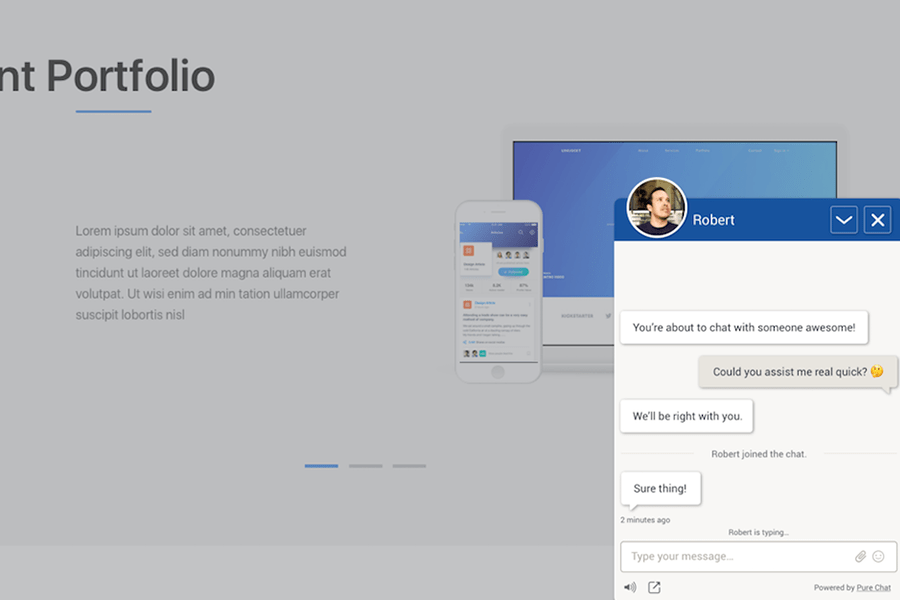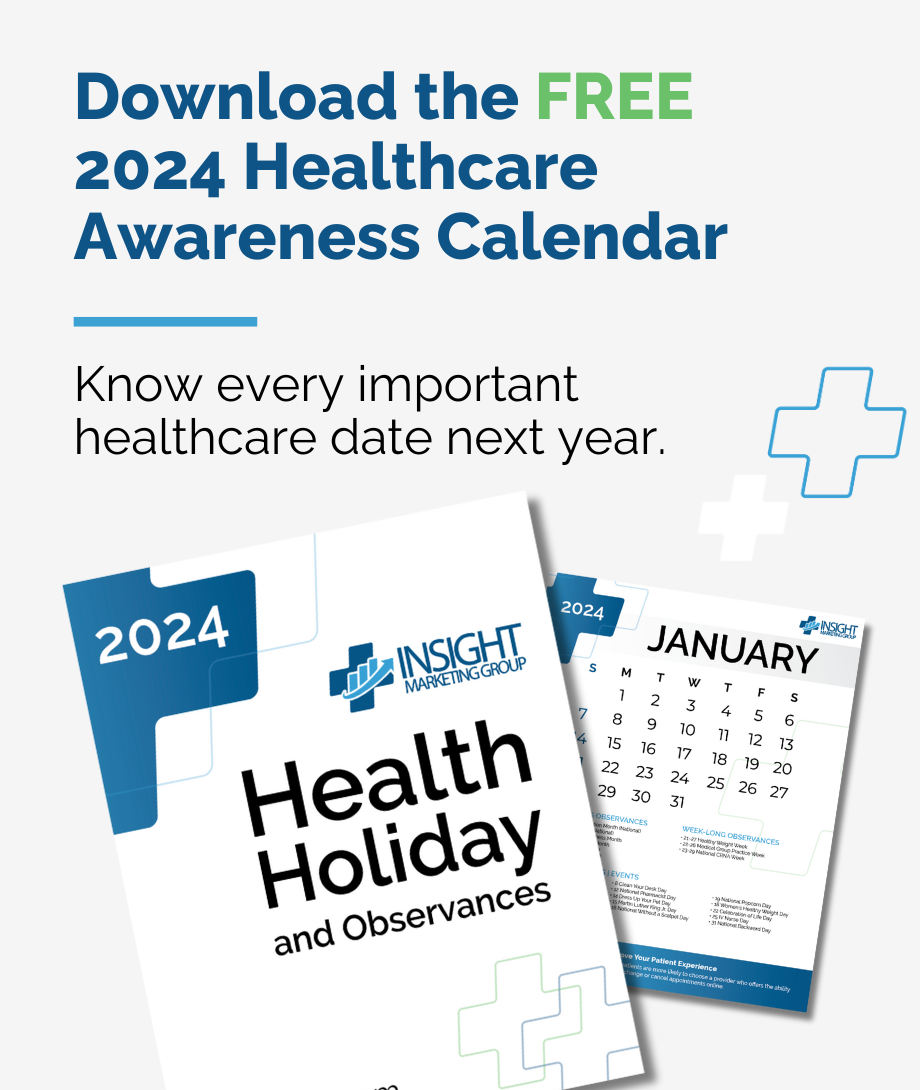In this post we’ll break down the top 10 strategies, tools and trends to grow your practice in 2020 and advance marketing and operations to a whole new level.
The healthcare industry has been in a state of dynamic evolution and profound change in recent years, and 2019 was no exception. Healthcare consumers are more empowered than ever and demand improved service along all touchpoints of the healthcare experience. As a result, medical practices are actively seeking new, innovative ways to enhance the patient experience, engage employees, and grow their communities.
1. Voice Search and SEO Revamps
 The rise of voice search is here, and if you don’t prepare for it, you risk being left behind in the dust. Voice search is currently used at a faster rate than mobile.
The rise of voice search is here, and if you don’t prepare for it, you risk being left behind in the dust. Voice search is currently used at a faster rate than mobile.
Voice assistants, like Google Home, Amazon Alexa, Cortana, and Siri, provide the answers to more than one billion searches conducted per month. Moreover, voice search has grown almost 40-fold in the last decade, and it is predicted that by 2020, 50% of all searches will be made via voice.
If you think people only use Alexa or Siri for finding directions or the sports scores, think again. Patients are turning to voice assistants to help them navigate the healthcare industry at all stages of the patient journey. From finding the nearest cardiologist to where to fill their prescriptions or where the nearest urgent care center is located, healthcare voice searches are exploding.
One way to monopolize voice search is to revamp important pages and posts on your website and format them, so they can show up for voice queries. When creating the pages on your website, lead with a commonly asked question such as:
- How high of a fever is too high?
- Does Botox really work?
- What’s the difference between a common cold and a sinus infection?
Instead of writing an elaborate introduction and burying the answer within the content, bring the answer right to the top. If you have a niche topic, you stand to see a pretty significant uptick in your search rankings.
At the same time, as you tweak and optimize specific web pages for voice search, you can use the opportunity to administer an SEO revamp that involves linking different posts and pages within your website together. You can also include rich media assets that weren’t available just a few years ago, including videos, GIFs, or photos.
For example, say you have a post from three or four years ago that has been forgotten. You can update the post, add some rich media, and throw in a new video by one of your physicians about the topic. By making a few small adjustments, you can witness a serious spike in both your Google analytics and searches based on voice.
2. Focus Groups
 Utilizing focus groups has emerged as a key component for medical practices to improve the patient experience and employee engagement, and the trend should strengthen in 2020. You may think that you know what your patients want, but can you be 100% sure? Asking them what they want and need is a sure-fire way to get many aspects of your practice in line with your patients’ expectations.
Utilizing focus groups has emerged as a key component for medical practices to improve the patient experience and employee engagement, and the trend should strengthen in 2020. You may think that you know what your patients want, but can you be 100% sure? Asking them what they want and need is a sure-fire way to get many aspects of your practice in line with your patients’ expectations.
Online focus group services can help enhance your website from a user experience standpoint. For a minimal payment, you can target potential patients based on demographics and enable them to provide feedback about your website regarding research, usability, and scheduling. Then, you can use the feedback to make improvements to your site.
In-person focus groups can produce key data about how you are perceived by your patients and the community within which you operate. Individual exit interviews with patients offer more intricate feedback as they are conducted in one-on-one settings and allow more opportunity for candidness.
Focus groups can also be used as a tool for employee engagement. Obtaining employee feedback on different aspects of your practice provides you with invaluable nuggets of advice for improvement as an organization.
Your staff is on your front lines every day. They know where the operational hiccups are and can identify opportunities for improvement. Your team can also share advice for new service lines, messaging, or other practice tweaks. Also, when you show your staff that you are genuinely interested in their opinion and are willing to act on it, they will naturally feel more committed, loyal, and engaged with your practice.
Podcast: Top 10 Strategies, Tools and Trends to Grow Your Practice in 2020
Would you like to take this information on the road with you? Click the podcast player below to hear some of the Insight Marketing Group leadership team break down the top 10 strategies, tools and trends to grow your practice in 2020. Be sure to subscribe on your favorite podcast player so you never miss an episode of the Dr Marketing Tips podcast.
3. Email Automation and Newsletters
 The nation’s top digital marketing leaders are promoting the return to email. Email is where people feel safe and free from the distractions and advertising-saturated confines of the internet. People tend to be more responsive to email, particularly email newsletters, where they can keep the information in their inbox without being forced to click on unwanted advertisements.
The nation’s top digital marketing leaders are promoting the return to email. Email is where people feel safe and free from the distractions and advertising-saturated confines of the internet. People tend to be more responsive to email, particularly email newsletters, where they can keep the information in their inbox without being forced to click on unwanted advertisements.
Email newsletter automation like theSkimm or Morning Brew has soared in popularity, and other businesses, including healthcare organizations, have taken notice. One way to offer your patients a continuous stream of content is by providing specific content based on their interests.
Let’s say someone visits your website and is interested in learning more about cataract surgery. By providing an email address, visitors will receive a series of, say five emails over five days or five weeks. The emails will break down what a cataract is, the different types of lenses, how to choose a surgeon, and how cataract surgery works.
With automation data, you get a vast amount of analytics back. You can see when people open your emails, what they click on, and what they want to learn about. It’s a great way to keep potential patients engaged and show that you are invested in educating them.
4. Community Management
 Claiming and managing your reputation online and posting on social media is essential but not as pivotal as community management. Community management involves how you respond to comments and reactions on social media or review sites. And, unfortunately, it’s not something that you can fully outsource.
Claiming and managing your reputation online and posting on social media is essential but not as pivotal as community management. Community management involves how you respond to comments and reactions on social media or review sites. And, unfortunately, it’s not something that you can fully outsource.
Whenever you interact with a patient, whether through an online review or on social media, you need to have a process in place to ensure you respond in a human-to-human fashion. And responding to both negative AND positive reviews is critical. It’s customer service 101.
Reputation management, social media, and community management are three very distinct things. You need to find people within your practice with the skill sets to manage those programs effectively.
Patients (both current and potential) expect a response when they “like” something or comment on social media. Part of community management entails liking those comments back (in a timely way) and saying, “Thanks for sharing,” or something similar.
Responding to negative comments and reviews has become more critical than ever. And that takes a team effort both with someone in-house and potentially an external social media and marketing professional. However you go about responding to negative reviews, it requires someone on the inside who understands your system and can find the person in question and contact them to deal with the situation.
If you’re thinking, “I have social media and reputation management covered,” here’s a real-world example to demonstrate how vital community management really is.
5. Patient Onboarding
 You (should) have an onboarding process for new employees, so why not do the same for new patients? Standard practice typically involves inviting a new patient to your portal to fill out whatever forms need to be completed.
You (should) have an onboarding process for new employees, so why not do the same for new patients? Standard practice typically involves inviting a new patient to your portal to fill out whatever forms need to be completed.
However, you can enhance that experience ten-fold by providing resources that answer many common questions before the patient even thinks to ask them. You can create videos that explain anything from where to park, to common conditions and treatments, to what patients can expect during their first appointment. You can also turn the video into an audio podcast that patients can subscribe to and listen to on their way to work.
Not only will your patients be wowed by the endeavor, but they will also feel important. Onboarding resources can improve clinic flow as patients won’t need to ask as many questions once they arrive. They can also potentially cut down on patients arriving late for their appointments, especially if the message comes from the doctors themselves.
Bottom line: being proactive and educating your patients will improve the overall patient experience and workflow within your practice.
Free Healthcare Awareness 2024 Calendar
Nearly every month of the year has a health holiday or observance, and there are also a number of awareness months that your patients and staff would love to know about. You also don’t want to miss chances to celebrate with your practice’s followers.
Free Healthcare Awareness 2023 Calendar
Nearly every month of the year has a health holiday or observance, and there are also a number of awareness months that your patients and staff would love to know about. You also don’t want to miss chances to celebrate with your practice’s followers.
6. Patient Communication and Lobby Videos
 We’ve been preaching for years that including a high-quality, engaging lobby video is critical to driving success. Years ago, it cost tens of thousands of dollars to put a lobby video together. Nowadays, it only costs whatever time it takes to put it together, and you become the storyteller in the equation.
We’ve been preaching for years that including a high-quality, engaging lobby video is critical to driving success. Years ago, it cost tens of thousands of dollars to put a lobby video together. Nowadays, it only costs whatever time it takes to put it together, and you become the storyteller in the equation.
A good lobby video should be an hour or two long and include many patient testimonials. Moreover, it’s an excellent opportunity to advertise some ancillary services, both surgical and non-surgical. Your lobby video should act as a giant billboard for you and your vendors.
Anything you can do to educate and engage your patients while they are sitting in your waiting room will pay dividends down the road.
7. Employee Engagement and Training
 Employee engagement is the new marketing. And the numbers back it up: when you improve employee engagement, patient satisfaction increases. Furthermore, healthcare organizations that deliver a “superior” customer experience achieve, on average, 50% higher net margins than organizations that provide “average” customer service.
Employee engagement is the new marketing. And the numbers back it up: when you improve employee engagement, patient satisfaction increases. Furthermore, healthcare organizations that deliver a “superior” customer experience achieve, on average, 50% higher net margins than organizations that provide “average” customer service.
That means your entire staff needs to recognize and understand the critical role they play in providing excellent customer service to your patients. And that can only come through employee engagement and training.
An engaged employee is a happy employee. And when your staff is content, it has a trickle-down effect to your patients who have a better overall experience. The employment market is extremely competitive, so it’s critical to make sure you have the best people in place and keep them there. And the best way to keep them is to engage them and make sure they have the proper training.
8. Website Chat
 Your patients increasingly expect medical websites to include some chatbot capability, as do other product and service sites. A chatbot is very similar to a “Live Chat” button on any customer service website. But, the conversation occurs with AI instead of a human being.
Your patients increasingly expect medical websites to include some chatbot capability, as do other product and service sites. A chatbot is very similar to a “Live Chat” button on any customer service website. But, the conversation occurs with AI instead of a human being.
The added value AI brings is its ability to deliver personalized content without the need for a live person to respond. Also, interactions can be recorded and securely stored in a HIPAA-compliant fashion.
A chatbot driven by AI can address common questions from existing and prospective patients on behalf of your practice 24/7. Bots represent a sure-fire way to make patients happy by giving them the specific information they are looking for right away. They also help free up significant phone and email time from your front-line employees.
Don’t think all-out AI is feasible for you right now? If not, you can set something up during business hours, where someone in your call center is responsible for the chatbox and directs queries as needed.
After closing, the chat icon will still be visible on your website but will respond to any messages saying, “Sorry, no one is at the office right now, but we’ll get back to you as soon as we can during regular office hours.”
9. Resource Libraries
 In 2020, from a content standpoint, less will be more. Your focus should be on special projects, and one way to do it is through a resource library. Instead of posting content pieces twice a month and dealing with all the extra work that goes with it, you can build up resources that current and potential patients can use.
In 2020, from a content standpoint, less will be more. Your focus should be on special projects, and one way to do it is through a resource library. Instead of posting content pieces twice a month and dealing with all the extra work that goes with it, you can build up resources that current and potential patients can use.
One orthopaedic practice we work with created a library of physical therapy exercises on their website. That way, their post-surgery patients can check the library when doing the exercises at home in case they don’t remember the movements.
Another plastic surgeon we work with is creating pre- and post-operative care videos. Following, for example, rhinoplasty surgery, patients are shown how to tape and care for their noses immediately after surgery. It’s a free resource that is emailed to patients with a link and is designed to educate and engage them.
10. Owned Media
 Today’s reality is that it’s exceedingly difficult to get the attention you want in rented online spaces like Facebook and Instagram. Plus, you have no control over when and how those entities might change the rules or pull the rug out from under you.
Today’s reality is that it’s exceedingly difficult to get the attention you want in rented online spaces like Facebook and Instagram. Plus, you have no control over when and how those entities might change the rules or pull the rug out from under you.
The solution?
Big brands are now purchasing traditional media in a big way, and there is potential for medical practices to do the same. And you’d be surprised to know that what’s available from an owned-media perspective is not that expensive.
For example, one practice we work with made a poor decision (without asking us first!) to buy a billboard that cost them about $60,000. They decided not to renew it because it didn’t solve all their marketing woes. However, for about $60,000, in a small market, you can buy a media company that already has revenue paying for itself. You can then take that publication and turn it into a marketing vehicle for your practice. The media company may have a subscriber list of say 40,000 potential patients that you now have as your audience.
In this post we discussed the top 10 strategies, tools and trends to grow your practice in 2020. Have an idea or trend we missed? Contact us and let us know what you think. We’d love to hear from you!
